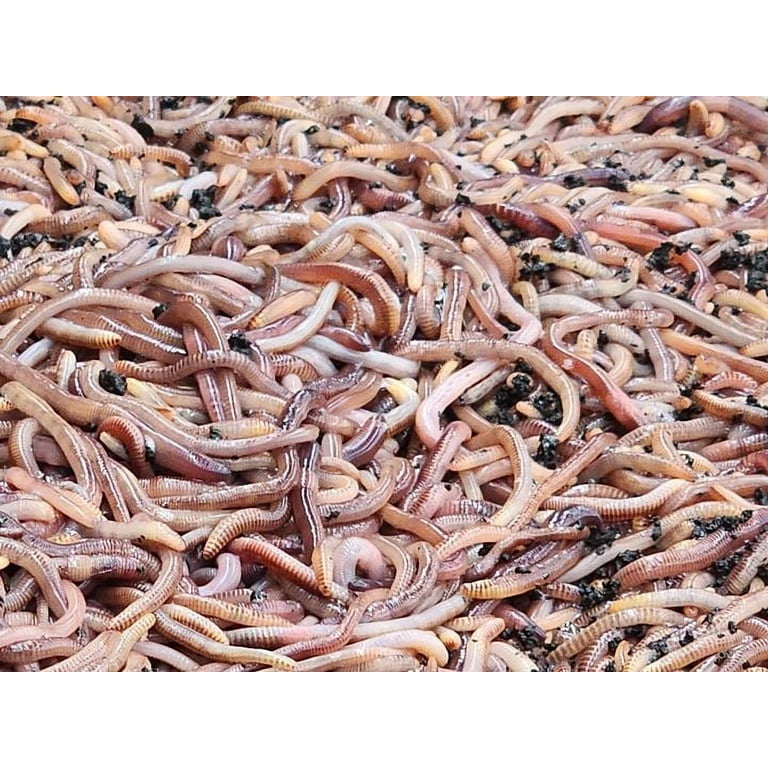Efficient red worms: Turn scraps into fertilizer
Efficient red worms: Turn scraps into fertilizer
Blog Article
Everything You Need to Know Regarding Red Wigglers for Composting
Red wigglers, or Eisenia fetida, play a critical function in the world of composting, transforming organic waste into useful dirt changes. Their unique biological characteristics enable them to grow in various problems, making them an ideal option for both amateur and seasoned composters alike. Understanding their demands and benefits is essential for establishing an efficient vermicomposting system. The process of establishing up a worm bin and maintaining it can posture obstacles. To effectively harness the capacity of these worms, one must check out the complexities of their treatment and monitoring.
What Are Red Wigglers?

(Hickory)
Native to The United States and copyright, red wigglers are surface-dwelling organisms that like wet, cozy environments rich in disintegrating natural matter. Their diet regimen is composed mostly of decomposing plant product, food scraps, and various other natural particles, which they take in and damage down efficiently. As they absorb this material, they create nutrient-rich castings that boost dirt fertility.
Red wigglers are hermaphroditic, having both male and female reproductive body organs, and can replicate swiftly under optimum conditions. Generally, red wigglers are important contributors to the procedure of recycling natural waste right into important garden compost.
Benefits of Utilizing Red Wigglers
Using red wigglers in composting systems uses numerous benefits that enhance both the efficiency of waste administration and the high quality of the resulting garden compost. These worms, medically called Eisenia fetida, are especially reliable at damaging down raw material, transforming kitchen area scraps and lawn waste into nutrient-rich compost at an accelerated rate.
One of the main advantages of utilizing red wigglers is their capacity to eat big amounts of natural product, typically processing their weight in food waste daily. This high usage price causes faster decay and lowers the volume of waste sent to garbage dumps. In addition, the spreadings generated by red wigglers are abundant in important nutrients, valuable microorganisms, and enzymes, making them an excellent plant food for gardens and plants.
Furthermore, red wigglers thrive in a range of environments, making them adaptable for both interior and exterior composting systems - red wigglers. Their presence in a garden compost bin helps to freshen the product, preventing smells and promoting a healthy composting procedure. Generally, using red wigglers not just contributes to effective waste administration yet additionally supports sustainable horticulture methods with the production of high-quality compost
(Worm Farms Near Me)
Setting Up Your Worm Bin
To efficiently establish a worm container, it is necessary to pick a suitable container that fulfills the demands of red wigglers while offering a helpful environment for composting. A suitable bin can be made from plastic, timber, or steel, with a capacity of a minimum of 1 square foot for each extra pound of worms.
Guarantee the container has appropriate drain holes to stop excess moisture, as red wigglers thrive in a damp, yet not waterlogged, environment. red wigglers. The container must likewise be aerated to offer enough air movement, preventing anaerobic problems that can harm the worms
A perfect area for the worm bin is an amazing, dark location, without straight sunshine and severe temperature levels, as red wigglers favor a temperature variety of 55 to 77 levels Fahrenheit.
Before presenting the worms, prepare bed linens materials such as shredded newspaper, cardboard, or coconut coir, which will offer both habitat and food. Dampen the bed linens lightly to create an inviting setting for the worms. Think about placing a lid on the bin to preserve moisture and lower insects, while guaranteeing it can be conveniently eliminated for upkeep.
Feeding and Treatment Standards
Feeding red wigglers is an important element of preserving a healthy and balanced composting system. These worms thrive on a varied diet plan, primarily composed of natural materials such as fruit and vegetable scraps, coffee premises, and smashed eggshells. It is important to prevent feeding them meat, milk, and oily foods, as these can develop undesirable smells and bring in insects.
When introducing food to your worm bin, cut or shred materials right into smaller items to assist in quicker decay. Start with percentages to gauge the worms' consumption rate, slowly raising the quantity as they adjust. It is recommended to alternative feeding places within the bin to motivate thorough blending and oygenation of the compost.

Troubleshooting Common Issues
Preserving a growing worm composting system can occasionally present difficulties that call for attention and troubleshooting. Common issues include an unpleasant smell, which typically shows overfeeding or the visibility of anaerobic problems. To correct this, decrease the quantity of food added and make certain correct aeration by blending the bed linens material.
An additional constant trouble is the retreat of worms from the bin. This can take place as a result of too much wetness or inappropriate environmental conditions. On a regular basis check the moisture levels, intending for a damp however not soggy consistency, and maintain optimal temperature levels between 60-80 ° F(15-27 ° C )to develop a comfy environment for your red wigglers.
Insects, such as fruit flies, can also attack worm bins. red wigglers. To combat this, cover food scraps with a layer of bed linens or shredded paper to discourage flies from laying eggs. Additionally, ensure that any kind of food added check my blog is fresh and totally free from mold and mildew, which can draw in unwanted parasites
Lastly, if your worms seem non-active, look for tension factors such as temperature variations or insufficient dampness. Dealing with these usual problems will assist preserve a healthy and balanced and efficient worm composting system.
Verdict
In summary, red wigglers, or Eisenia fetida, play a crucial role in lasting waste monitoring with vermicomposting. Appropriate configuration and upkeep of a worm container, along with adherence to feeding guidelines, guarantee a thriving ecosystem that minimizes garbage dump payments.
Report this page